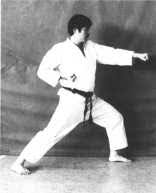It was LUCK!
I happened to find myself in an apartment in Waterford, Michigan and looked around for an Isshin-Ryu dojo close by. As it turns out, there were two, both highly-regarded. I looked for Isshin-Ryu only because as a Marine, I was stationed on Okinawa and worked with Master Angi Uezu back in the 1980's. I did not study karate at that time (pity), but I knew what Isshin-Ryu was.
http://hollowaysisshinryu.com/instructors/
My Sensei is amazing. I know everybody says that, but I can't tell you how fortunate I feel to have found this dojo. It truly does feel like an extension of my family to be there. He insists on our best effort, and he is well-qualified to teach the best, most authentic, Isshin-Ryu that can be found outside of Okinawa.
My other sensei are amazing as well. One is a demon for basics and kata. One is amazing with self-defense and practical training (even using moves taken from other arts) and another is a 'Bunkai Man' who can show you ten or fifteen different realistic self-defense moves that can be found inside the kata we do.
Our dojo does not make any money. Sensei does not draw a salary from it, but he's there constantly when he is not doing his 'day job' (and pursuing his PhD at the same time)! No one at the dojo draws a salary; but all black belts are expected to teach some; some teach more. They do it from a love of Isshin-Ryu. How much better can it get?
Yeah, my dojo is the real deal. I can't speak for other dojos, but I feel incredibly fortunate to have found this one. I would wish everyone a dojo like mine, and instructors like I have been blessed with.

